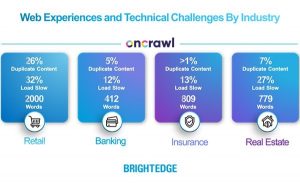For newer agile marketing teams, it’s not all about racing to the finish line.
Most people think agile is all about the race to the finish line and cranking out more and more work, but if you’re a newer agile marketing team you’ll want to focus more on predictability than speed. It sounds weird because we do want faster campaign delivery, but predictable delivery is needed first.
Let’s be real here—marketers often aren’t trusted by stakeholders. Marketers always have good intentions, but too often they are overloaded, causing them to miss deadlines. When the Sales Department is waiting for that new product promotion to launch so they can meet their sales quota and it’s not ready on time, the relationship becomes strained.
Now let’s turn this scenario around and say that the team delivers 100 % of their committed work 80%of the time. This is the metric we want to strive for in agile marketing, because if the team hits their goal every time, they may not be taking on enough of a challenge. However, if they’re not getting done what they said they would do less than 80% of the time, trust is broken.
Predictable agile marketing teams have these three things in common:
The team self-selects work
A predictable agile marketing team has a well prioritized backlog of work, but work should never be assigned to the team. When we tell a team what work they have to complete by when, the team will always willingly agree no matter how unrealistic that request may be, anchoring what the team is actually capable of doing.
With agile marketing, we want the team to self-select the work that everyone on the team is confident that they can finish in the given time-period. The shorter cycle the team plans for, the more likely they will be accurate in their predictions of what can get done. It’s recommended that the team commits to work for one or two weeks at the most.
The team should look at backlog items one by one and discuss whether or not they can get done in the timeframe, pulling in items until they decide they are full. If the team has a history of not being able to stick to a plan for a week or two, they’ll want to make sure they build in some buffer time. It’s human nature to over-commit and not take into account what we don’t know today, so to be truly predictable, plan only about 80% of your team’s time.
The team makes a commitment
A predictable team makes a commitment to each other to focus on the work they said they’ll complete. The “Fist of Five” (or “Fist to Five”) technique may be helpful for formalizing the team’s commitment. A fist means no, whereas a five is the highest level of confidence. After selecting the work, vote this way to gauge how the team is feeling about completing the chosen work. If you don’t have a lot of 4’s or 5’s, look at removing some items and vote again until you reach a high level of confidence from all team members.
Interruptions are minimal
If you try to get work done, but stop every 30 seconds to look at your phone or email, you’re probably not working very efficiently, but sadly this has become the norm for most marketers. Some interruptions are a normal part of working in marketing, but if the team is constantly stopping and starting, they will have a difficult time getting anything done.
An agile marketing sprint is a planned time where the team works with minimal interruptions. If keeping to a plan is difficult at your company, try one week sprints. The goal then is to protect the team from interruptions and distractions so they can actually get done what they promised to their stakeholders.
Predictability wins
When your agile marketing team is predictable, it improves relationships with your internal customers who count on your team to deliver marketing campaigns on expected dates. With a trusted relationship, the team will be less pressured to have unrealistic expectations set by stakeholders because they know that when they ask for a timeline, it’ll be pretty darn close.
Plus, when your team is predictable, you have happier, more productive, less stressed marketers. It’s a win-win for everyone.
Opinions expressed in this article are those of the guest author and not necessarily Marketing Land. Staff authors are listed here.
(19)
Report Post






